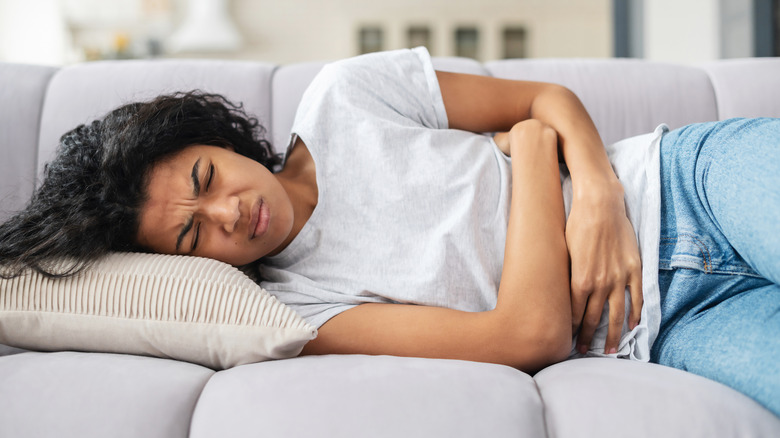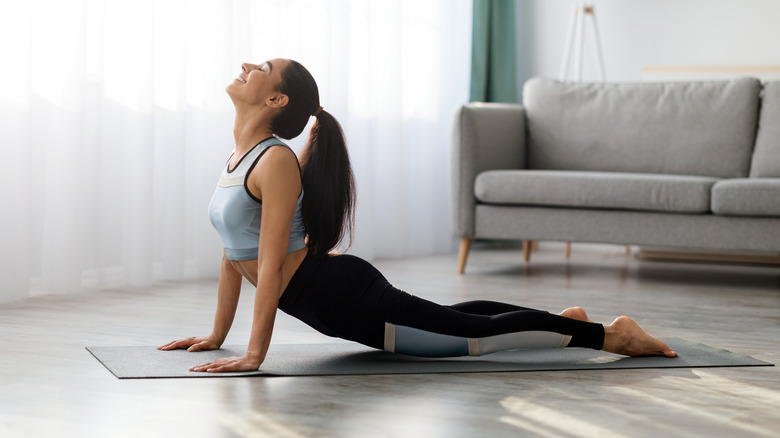The Best Workouts To Ease PMS Symptoms
Premenstrual syndrome, or PMS, can make your life pretty miserable, causing all sorts of symptoms. In addition to painful cramps, some women also experience migraines, fluid retention, diarrhea, or junk food cravings. It's not uncommon to gain five pounds or more in the days before your period, gynecologist Alyssa Dweck told Cosmopolitan. On top of that, you may feel fatigued and have a hard time keeping up with your workouts.
Speaking of exercise, hitting the gym is probably the last thing on your mind when dealing with PMS — and for good reason. You're low on energy, your stomach hurts, and your breasts are tender. Believe it or not, exercise might actually help you get back on your feet and relieve PMS symptoms. In a 2013 study, scientists asked 40 students to engage in aerobic exercise three times per week for two months. Women who followed these guidelines experienced a 31% reduction in PMS symptoms after just four weeks. By the end of the study, their symptoms improved by 60%, reports the Iranian Journal of Nursing and Midwifery Research.
Scientists say that aerobic training balances the hormones responsible for breast pain, water retention, emotional stress, and other PMS symptoms. In some cases, it may also relieve anxiety and depression. What's more, it increases blood flow to your tissues and may help reduce back and pelvic pain.
But you don't necessarily have to get your heart rate up for a sustained period of time to feel better on your period. Besides aerobic exercise, other types of workouts can ease PMS symptoms.
Try these gentle workouts to beat PMS
Yoga is just as effective as aerobic training for women with PMS, suggests a 2019 study featured in the Journal of Education and Health Promotion. Researchers asked 72 women to practice either yoga or aerobic exercise for one month. Both groups reported pain relief and improvements in PMS symptoms, which may be due to the effects of physical activity on mood and hormone levels. Yoga produced slightly better results than cardiovascular training, but the difference was negligible.
Walking, swimming, Pilates, and low-volume strength training might do the trick, too. With a few exceptions, just about any type of exercise can make you feel better, OB/GYN John Thoppil told Healthline. What matters most is to take it slowly and listen to your body. This isn't the best time to push yourself to the max, and you may need to reduce workout intensity. For example, it's perfectly fine to hit the weights room, but you may not be able to lift as heavy as usual. If you normally squat 70 pounds, aim for 30 or 40 pounds on the days leading up to your period.
Your best bet is to engage in low-impact exercise, such as stretching, yoga, barre, tai chi, or even dancing. Consider swapping high-intensity workouts for brisk walking, cycling, or swimming. Note that everyday activities like gardening, grocery shopping, and walking your dog, count as exercise, too.


